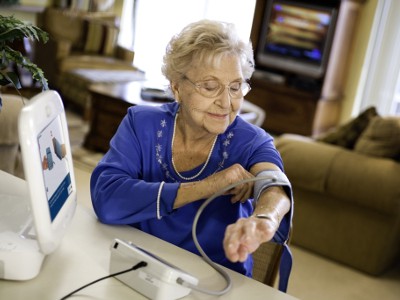
 A new study from the University of Ottawa has found that a large proportion of home blood pressure monitors give inaccurate measurements, with some readings being off by a large enough margin to potentially pose significant health risks for patients.
A new study from the University of Ottawa has found that a large proportion of home blood pressure monitors give inaccurate measurements, with some readings being off by a large enough margin to potentially pose significant health risks for patients.
Researchers tested 210 patients at a nephrology clinic in Ottawa who used home blood pressure (HBP) monitors and found that 30 per cent of HBP monitors gave inaccurate measurements of systolic BP values and 32 per cent gave inaccurate readings of diastolic BP. A worrying eight per cent of monitors were inaccurate by considerable amounts for systolic BP and nine per cent for diastolic BP.
“We believe that we have identified a significant gap in the HBP monitoring process which needs to be further investigated,” say the study’s authors, “These large differences between the measurements could have an adverse impact on the diagnosis and management of hypertension. In the worst case, the treatment decision on hypertension management would be based on possibly inaccurate measurements from home BP devices.”
Since high blood pressure commonly does not present with clear symptoms, blood pressure measurement is key to diagnosis and treatment. And whether it’s done at home, in an ambulance or at a pharmacy blood pressure kiosk, out-of-office blood pressuring monitoring has proven useful in managing high blood pressure and hypertension. Monitoring blood pressure at home involves patients in their own treatment plans, allows for readings taken at different times of day and has been found to be a stronger predictor of cardiovascular morbidity and mortality than office BP measurement, where part of the problem has to do with the “white coat and mask” effect which can promote nervousness and thus abnormal office BP readings.
With some calling it a paradigm shift in healthcare delivery, mobile technology is increasingly playing a role in health care, involving home monitoring kits and a full range of smartphone applications that can aid in the assessment of symptoms, medication management and transmitting of information between patients and health care providers. A recent Canadian study involving patients with chronic kidney disease found that by giving (and training) patients on using a smartphone to help manage their disease over a six-month period, participants’ average blood pressure readings dropped significantly, a total of 127 medication discrepancies were discovered and at the end of the study, patients felt more confident and in control of their condition and clinicians reported that patients were better informed and more engaged in their treatment.
A 2014 study in the United States found that HBP monitoring provides significant savings in health care dollars, with insurance companies calculated to get a return in the first year alone of between $0.85 and $3.75 for every dollar spent on reimbursement programs for HBP kits. High blood pressure is a risk factor stroke, coronary artery disease, heart and kidney failure as well as other chronic diseases. Six million Canadians, or one in five adults, have high blood pressure, while one in six with high blood pressure are unaware of their condition.
Leave a Reply
You must be logged in to post a comment.




 Share
Share Tweet
Tweet Share
Share




Comment